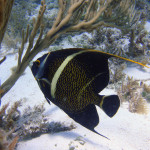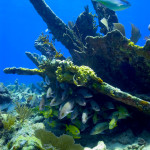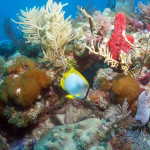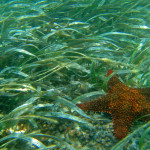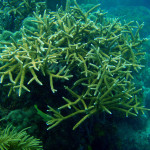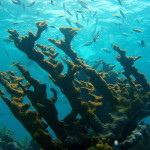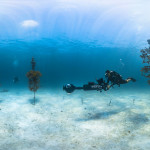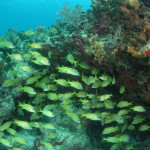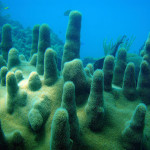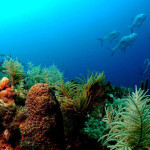By guest writers Rachel Pawlitz, communications coordinator, Florida Keys National Marine Sanctuary, and Elizabeth Weinberg, social media coordinator and editor/writer, NOAA Office of National Marine Sanctuaries
For more than 40 years, national marine sanctuaries have worked to protect special places in America’s ocean and Great Lakes waters, from the Hawaiian Islands to the Florida Keys, from Lake Huron to American Samoa. Backed by one of the nation’s strongest pieces of ocean conservation legislation, the National Marine Sanctuaries Act, the sanctuaries seek to preserve the extraordinary beauty, biodiversity, historical connections and economic productivity of our most precious underwater treasures. And — lucky for you — most of these places are accessible to recreational divers. Sanctuary waters are filled with unique ecosystems, harboring a spectacular array of plants, animals and historical artifacts, all waiting to be explored. National marine sanctuaries belong to everyone, so dive in.
Florida Keys National Marine Sanctuary
In the crystal-clear waters of the Florida Keys, angelfish and butterflyfish dart among the corals of North America’s only living barrier reef. Scattered wrecks lie in testament to the risks the reef once posed to shipping. Rachel Carson called the Keys “America’s only coral coast,†and Ernest Hemingway famously fished its bounty. This unique region is protected by Florida Keys National Marine Sanctuary, designated in 1990 to preserve the coral barrier-reef ecosystem and these historic shipwrecks.
Today, the sanctuary encompasses 2,900 square nautical miles, including most of the Florida reef tract and surrounding seagrass beds, sand flats and backcountry mangroves. These stunning habitats support more than 6,000 marine species, from gentle manatees to mountain star coral.
Parrotfish and grunts are a common sight on spectacular spur-and-groove reefs found at Sanctuary Preservation Areas such as Carysfort, Molasses, and Looe Key. Patch reefs, such as Coffins Patch and Cheeca Rocks, are interspersed with coral and seagrass, supporting yellowtail, grouper and other fish that feed each night in seagrass beds. In the sanctuary’s Western Sambo Ecological Reserve, healthy stands remain of the once-abundant elkhorn coral. The sanctuary uses a network of zones with specific regulations to preserve the ecosystem’s health, so when planning your dives, check the rules on the sanctuary website for each location.
The sanctuary also features the Shipwreck Trail, a series of nine shipwrecks dating from the Spanish Armada-era San Pedro off Indian Key to the scuttled Coast Guard cutter Duane off Key Largo.
When you dive in the Florida Keys, you can take care of this special place by using the sanctuary’s mooring buoys to prevent anchors from damaging coral and other sensitive habitats. If you are booking a charter, look for the sanctuary’s Blue Star certification and know that you’re selecting an operator dedicated to education and coral reef conservation. With over 700,000 divers and snorkelers hitting Keys waters annually, a little bit of extra care goes a long way. To preserve this unique area, the sanctuary is in the midst of modernizing its zones and regulations to ensure the Keys’ ecology remains intact for the next generation.
Experience the wonders of Florida Keys National Marine Sanctuary and other national marine sanctuaries via more photos here. Â Â
Cover image credit: Steve Lonhart/NOAA
The post Exploring National Marine Sanctuaries: Florida Keys appeared first on Scuba Diver Life.
